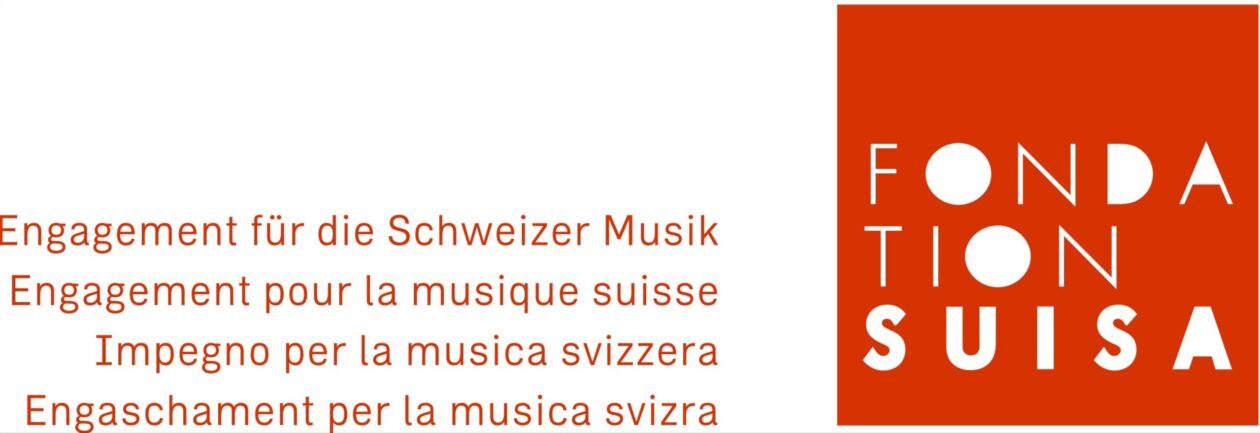«Get Going!» Portrait Series 2020

Electronically processed everyday sounds are combined with elements of ländler music to create a new listening experience: this is what the double bass player and composer, Pirmin Huber, wants to develop and realise for his new project. The «Get Going!» grant is supporting him with this project.
The Schwyz composer and double bass player, Pirmin Huber, has been experimenting with new ways of combining Swiss folk music with other genres to create new sounds since he completed his jazz studies (majoring in composition) at the Lucerne University of Applied Sciences and Arts. Whether as a soloist or as a member of the “Ländlerorchester” (Ländler Orchestra), “Stereo Kulisse”, “Ambäck” or of the “Gläuffig” formation: Huber redefines folk music and blends it with techno, jazz, classical or electronic music. Now Pirmin Huber wants to conduct a type of “field recording” research with the help of electronically manipulated everyday noises and the folk music sounds of his double base and other instruments he plays. The whole thing should lead to a work that challenges our listening habits, thus reflecting the world at this extraordinary time.
Pirmin Huber, how did the idea for this project come about?
Pirmin Huber: I started out playing folk music, that is to say acoustic music, and I have increasingly delved into electronic music. By tinkering with new recording techniques, I have come up with ideas that I want to develop further. I grew up on a farm, and we also had a carpenter’s workshop there. I was as fascinated by the sounds of the saw as I was by all the other sounds, and I already tried to imitate them with my musical instruments at that time. In my «Get Going!» project, I start with the sounds I can create with my instruments, double bass, Schwyzerörgeli (an accordion first made in the canton of Schwyz), guitar, piano or Glarus zither, and combine them with typical everyday sounds that I make seem unfamiliar with the help of electronic music. Since my youth, I have been asking myself the following question: how can you make music from these sounds. Now I can afford quite a few tools, thus giving me the opportunity to get deeply involved with the project.
What comes first? The sound collection and then the composition or is it the other way around?
It’s a mixture of the two. New opportunities keep opening up while I work. It’s all part of the process. It’s important to me that I create a very specific mood with my music. The finished work will consist of several pieces that flow together or at least relate to each other. It could be described as a type of suite.
You shift from one style to the next with ease. As a double bass player, you always set the tone. Can connections or interfaces between folk music, classical music, jazz, pop, rock or techno be identified from this position?
Perhaps. In any case, techno and ländler music are very closely related genres. This may be difficult to understand from the outside (laughs), but the energy that comes from playing is the same for techno as it is for ländler music, which is after all also dance music. I think you first have to have played both to experience this common feature. In my project, I am trying to create a kind of modern ländler music with electronics and grooves.
Nature and urban life: do you get the inspiration you need from these conflicting elements?
I need both. As soon as one of them is no longer there, it feels like something is missing. That’s probably why it’s logical that I want to bring these two opposing poles together. I’ve had three strings to my bow for a long time: folk music, contemporary music and techno. However, I feel that they are one.
The «Get Going!» grant is intended to provide start-up financing without any result-related expectations. What do you think of this funding model?
I think it’s great! The freedom it gives us serves as motivation to really achieve something great. After all, I had conceived the idea for my project a long time ago, but then things kept getting in the way. And much ultimately depends on whether you can afford to execute such a project and also implement it without any stress. «Get Going!» allows me to do just that.
Interview: Rudolf Amstutz
FONDATION SUISA started awarding new grants in 2018. Under the heading of «Get Going!», creative and artistic processes that do not fall within established categories are given a financial jump-start.

